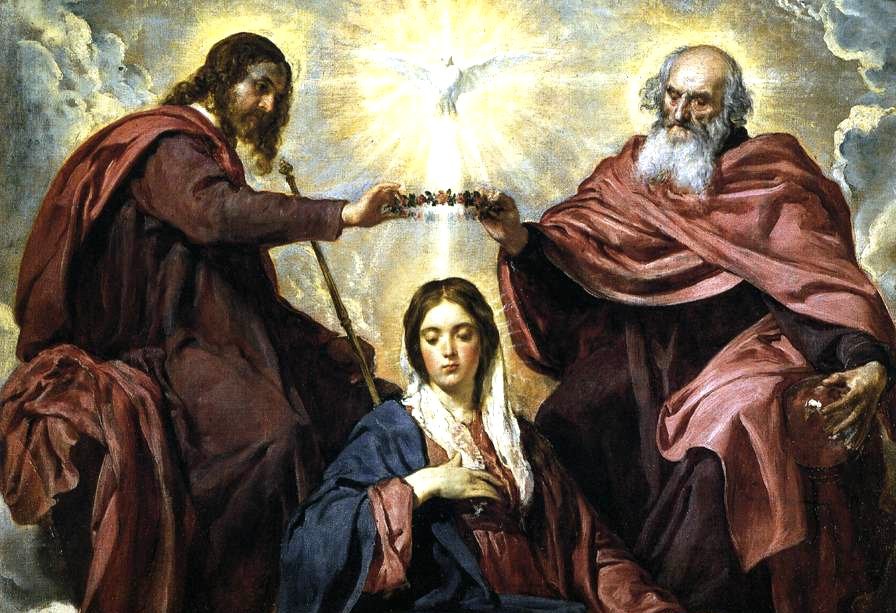
Is anything known about the origin of the “Hail, Holy Queen” that we say at the end of the Rosary? I have always liked this prayer.
The “Hail, Holy Queen”, or “Salve Regina” in Latin, is traditionally said at the end of the Rosary and it is one of the four Marian hymns said after Compline in the Divine Office. It is a rich and much loved prayer and it goes back many centuries.
As with some other prayers there is an element of uncertainty about who wrote it, historical writings attributing it to at least three persons.
According to the Catholic Encyclopedia, one such person is Petrus of Monsoro, Bishop of Compostella in Spain, who died about 1000.
Another is Adhemar, Bishop of Podium (Puy-en-Velay) in France, who was the first to ask permission to go on the Crusades.
Adhemar is said to have composed the hymn to invoke the protection of Our Lady, Queen of Heaven, before leaving for the Crusades in 1096.
But the most probable writer is Blessed Hermann Contractus, or Hermann the Cripple, who died in 1054. What is clear is that the hymn dates back to at least the eleventh century.
Blessed Hermann has an interesting story. He was born in 1013 at Altshausen in Swabia, Germany, one of fifteen children of Count Wolverad II.
Hermann was deformed, crippled and very small, whence the name in Latin “Contractus”.
He could not stand or walk unaided, and he could barely sit upright in the special chair they made for him.
His fingers were so twisted that it was almost impossible for him to write, and his mouth and tongue were so deformed he could hardly be understood when he spoke.
Yet he gradually overcame these difficulties to a point where he was able not only to write but also to make clocks and astronomical and musical instruments, and to help the many people who sought his advice.
He was extraordinarily gifted intellectually, so much so that when he was only seven his parents entrusted him to the learned Benedictine Abbot Berno on the island of Reichenau in Lake Constance, where he later took monastic vows as a Benedictine.
In spite of his handicaps Hermann excelled in such disciplines as theology, mathematics, astronomy, music, Latin, Greek and Arabic.
Students flocked to him from all over, attracted not only by his learning but also by his virtue and pleasant personality.
His biographer describes him as pleasant, friendly, cheerful and never complaining, always trying to cooperate.
Hermann wrote many books on a variety of subjects and is considered one of the most gifted minds of the eleventh century.
He also wrote religious hymns, and to him are attributed not only the “Hail, Holy Queen” but also another great Marian hymn, the “Alma Redemptoris Mater”, also used in the Divine Office.
At the age of forty-one he contracted pleurisy and died ten days later on September 21 1054. He was beatified by Pope Pius IX in 1863.
Hermann is a testimony to what can be achieved in spite of severe physical handicaps.
The “Hail, Holy Queen” quickly became popular all over Europe. St Bernard of Clairvaux, who had great love for Our Lady, did much to promote it.
There is a touching story of him entering the cathedral of Speyer on Christmas Eve in 1146 while the hymn was being sung. At the words “O clement, O loving, O sweet Virgin Mary” he is said to have genuflected three times in veneration of Mary.
A book on St Bernard records that brass plates were later laid in the pavement of the cathedral to mark the spot where the saint showed this devotion.
By the middle of the twelfth century the “Hail, Holy Queen” had been introduced in shrines and monasteries in many places, including Cluny and Citeaux.
In the thirteenth century it was used after Compline in the Divine Office of the Dominicans and later the Franciscans. Pope Gregory IX (1227-1241) prescribed it for the universal Church.
The hymn is a heart-felt plea for mercy from the “poor banished children of Eve” to Mary, addressed as “Queen, Mother of Mercy, our life, our sweetness and our hope”.
The petition ends: “Turn then, most gracious advocate, thine eyes of mercy toward us; and after this our exile, show unto us the blessed fruit of thy womb, Jesus. O clement, O loving, O sweet Virgin Mary. Pray for us, O holy mother of God, that we may be made worthy of the promises of Christ.”
Our Lady will not to fail to answer those who pray to her with such humility and faith.